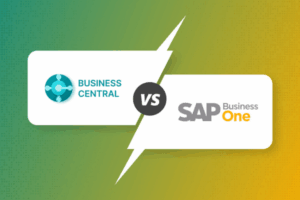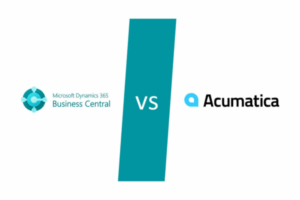Why Compliance Is So Critical in Chemical Manufacturing
The chemical industry is among the most highly regulated sectors in the world. Manufacturers must comply with a wide range of local, national, and international regulations, including:
- OSHA (Occupational Safety and Health Administration)
- EPA (Environmental Protection Agency)
- REACH (Registration, Evaluation, Authorization and Restriction of Chemicals)
- GHS (Globally Harmonized System of Classification and Labeling of Chemicals)
- TSCA (Toxic Substances Control Act)
- FDA (for certain food- or pharma-related chemicals)
These regulations require extensive documentation, precise labeling, batch traceability, safe material handling, and regular reporting. Failing to meet any of these requirements can result in fines, legal actions, shutdowns, or damage to your brand. These are just some of the key compliance challenges in chemical manufacturing that make a strong case for better digital tools.
Common Compliance Challenges in Chemical Manufacturing
Regulatory Complexity and Constant Changes
The regulatory environment is complex and constantly changing. Companies must monitor updates across multiple jurisdictions and update their internal practices accordingly. Manual tracking is error-prone and time-consuming. This is one of the most persistent compliance challenges in chemical manufacturing, as it affects companies of all sizes.
SDS (Safety Data Sheet) Management
Chemical manufacturers must generate, update, and distribute SDSs for all hazardous materials. Without automation, this process is tedious and subject to human error. Missing or outdated SDSs can lead to failed audits or worker safety incidents.
Hazardous Material Classification and Labeling
GHS standards require accurate classification and labeling of hazardous substances. Labels must include standardized hazard statements, pictograms, and precautionary measures. Mistakes in labeling can cause non-compliance or put handlers at risk, a core part of the compliance challenges in the chemical manufacturing landscape.
Batch Traceability and Recall Management
If something goes wrong with a product, manufacturers must be able to trace every ingredient back to its source. Without real-time traceability, executing a fast and effective recall is almost impossible.
Environmental Reporting and Waste Documentation
Chemical plants must track and report on hazardous waste storage, transport, and disposal. Incomplete or inconsistent records can lead to environmental violations, fines, or operational delays. This is one of the more overlooked compliance challenges in chemical manufacturing, but it can have major consequences.
How ERP Systems Help Chemical Manufacturers Stay Compliant
The right ERP system doesn’t just help you run your business, it keeps you compliant, audit-ready, and ahead of regulatory changes. Here’s how:
- Centralized Compliance Data: An ERP provides a single source of truth for compliance documentation, reducing the risk of version errors and lost records.
- Automated SDS Management: ERP systems can store, auto-update, and distribute SDSs, ensuring your team always has the latest version.
- Hazard Classification and Labeling Tools: Built-in GHS-compliant labeling modules ensure accuracy and speed when printing labels for hazardous goods.
- Real-Time Lot and Batch Tracking: With end-to-end traceability, ERP systems make it easy to track raw materials, intermediates, and finished goods.
- Environmental Reporting: Track and generate reports on hazardous material usage, emissions, and waste disposal, helping you meet EPA and local reporting requirements.
- Audit Trails and History Logs: ERP systems log every transaction, adjustment, and material movement—perfect for audits and inspections.
Stat to note: According to LNS Research, manufacturers with automated compliance systems experience 36% fewer compliance violations.
Real-World Example
One chemical manufacturer we spoke to struggled with SDS management. Their safety team was manually updating sheets, emailing versions to different departments, and storing them in scattered folders. After implementing a chemical-specific ERP, SDSs were generated and distributed automatically from a central system. The next OSHA audit? Passed in half the time, with no documentation issues. This is a real example of how ERP can directly resolve compliance challenges in chemical manufacturing.
What to Look for in a Compliance Focused ERP
Not all ERP systems are created equal. If compliance is a top concern, look for a solution built with chemical manufacturing in mind. Here’s what matters most:
Built-in SDS and GHS Tools: Your ERP should generate and manage Safety Data Sheets (SDS) automatically and maintain up-to-date GHS labeling. This ensures you always meet regulatory labeling requirements and eliminate the need for manual document updates.
Automated Batch and Lot Traceability: Traceability is crucial for both quality control and compliance. An ERP should allow you to track raw materials through the entire production process and quickly identify affected batches in case of a recall.
Labeling That Meets International Standards: Whether you ship locally or globally, your ERP should support multilingual and GHS-compliant label generation that includes hazard icons, handling instructions, and regulatory information.
Regulatory Reporting Templates: Manual compliance reporting is time-consuming and risky. A strong ERP should offer built-in templates for OSHA, EPA, REACH, and other relevant agencies to help you generate accurate reports quickly.
Environmental and Waste Tracking Modules: Your system should capture data on hazardous material usage, emissions, and waste disposal. Automated tracking makes it easier to meet environmental reporting requirements and maintain audit readiness.
Cloud Capabilities: Cloud-based ERPs ensure you always have access to the latest regulatory updates, system features, and real-time compliance dashboards. They also support remote audits and easier collaboration.
Industry Expertise from Your ERP Provider: Lastly, choose a vendor that understands chemical manufacturing. A partner with industry-specific knowledge can help tailor the ERP to your exact compliance workflows, ensuring long-term success.
Peace of Mind
Regulatory compliance in chemical manufacturing is too important, and too complex, to manage manually. The right ERP helps your business stay compliant by automating documentation, streamlining reporting, and ensuring traceability. Instead of dreading audits, you’ll be ready for them. More importantly, you’ll be solving real compliance challenges in chemical manufacturing before they become costly problems.
Want to simplify compliance? Learn how Alchemy 365 helps chemical manufacturers stay ahead of regulations with built-in tools for batch tracking, SDS management, and more.
📌 Related Reading: The Ultimate Guide to ERP for Chemical Manufacturing





